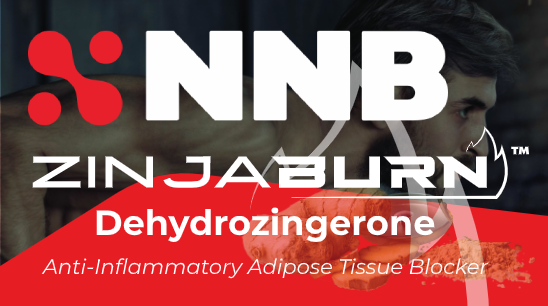Rating The Fat Burners
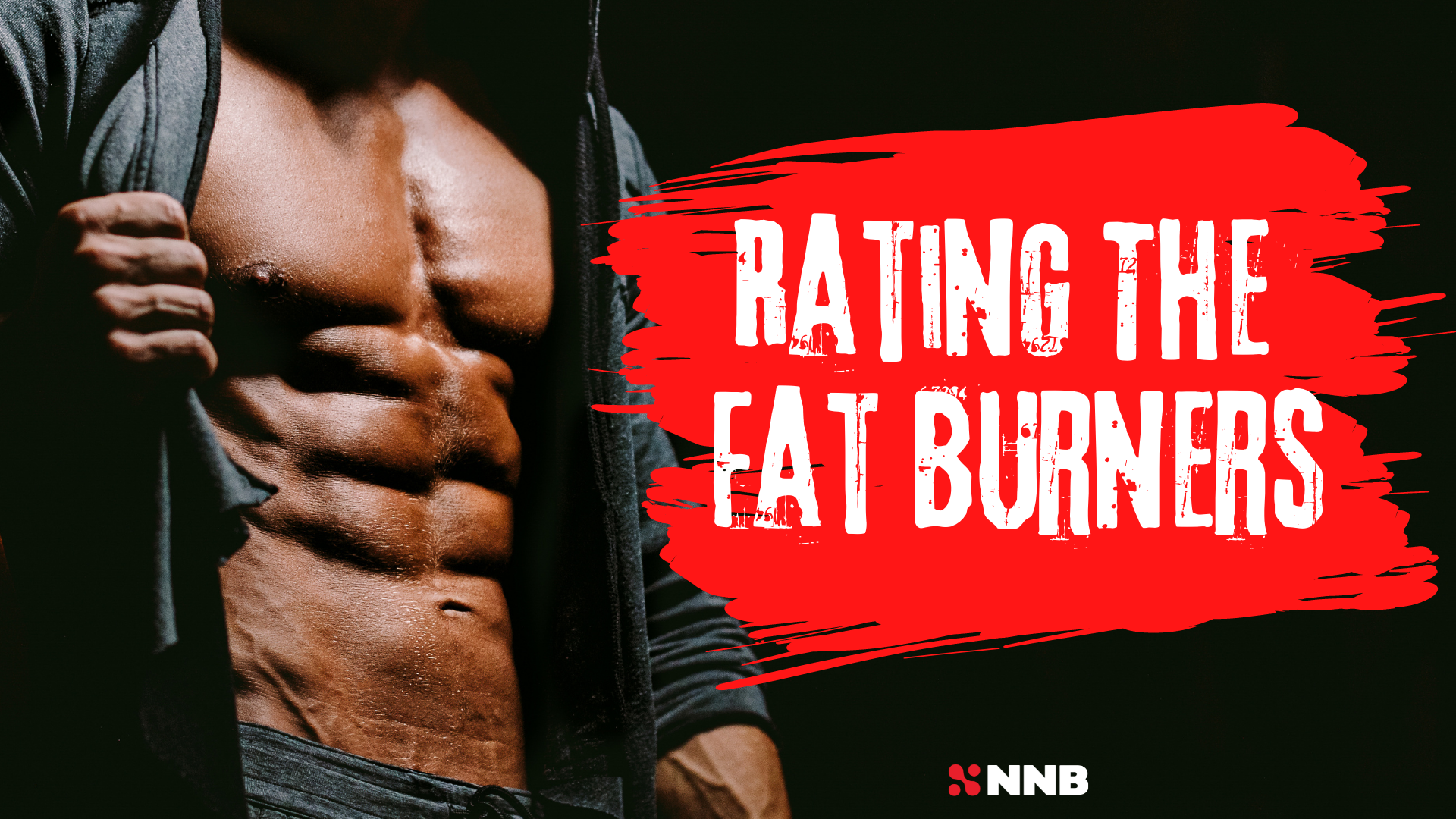
There are so many fat burners to choose from that it’s hard to navigate through which ones work and which ones are an outright scam! With so many companies releasing new “diet pills” every day, there are way too many to choose from. As with all supplements, not all fat burners are created equal. Some will provide effective, high-quality ingredients made with real science, while others are formulated using cheap ingredients that don’t meet label claim and provide little to no fat-burning effects. Others may contain dangerous impurities or banned substances from cross-contamination that may cause serious harm to your health. Not sure which one you should choose? The Muscle Insider team has looked at the most popular ingredients found in top fat burners on the market and taken the guesswork out by rating them for you.
L-Carnitine
 L-carnitine is a derivative of the amino acid lysine. It is made in the body by lysine and methionine and can be obtained from meat.1 L-carnitine plays an important role in the transport and oxidation of fatty acids in the mitochondria—the powerhouse or energy-generating cells. L-carnitine supplementation is popular in non-stimulant fat burners, pre-workouts and endurance products.
L-carnitine is a derivative of the amino acid lysine. It is made in the body by lysine and methionine and can be obtained from meat.1 L-carnitine plays an important role in the transport and oxidation of fatty acids in the mitochondria—the powerhouse or energy-generating cells. L-carnitine supplementation is popular in non-stimulant fat burners, pre-workouts and endurance products.
Carnitine transports long-chain fatty acids into the mitochondrial matrix, where they can go through oxidation to acetyl CoA, which is in turn used in the citric acid cycle to generate energy or ATP.2 This process drives the energy that fuels workout performance and endurance. This action may result in greater amounts of fat being used as fuel during workouts while decreasing protein catabolism, preserving lean muscle and improving carbohydrate utilization.
But Does It Work?
L-carnitine supplementation hasn’t been shown to cause weight loss or influence fat metabolism in humans, unless the user is deficient in carnitine. The weight-loss efficacy of L-carnitine was evaluated in a double blind, placebo-controlled study in moderately overweight premenopausal women. For 8 weeks, the women received either 2 grams of L-carnitine or a placebo twice daily.3 All subjects walked for 30 minutes (60 to 70 percent maximum heart rate) 4 days a week. For the subjects who completed the study, no significant changes in mean total body mass, fat mass and resting lipid utilization occurred over time, nor were there any significant differences between groups for any variable.3
We could make a case to include L-carnitine as a “supportive” ingredient in a fat burner, but on its own, it won’t burn fat.
Rating: 
Conjugated Linoleic Acid (CLA)
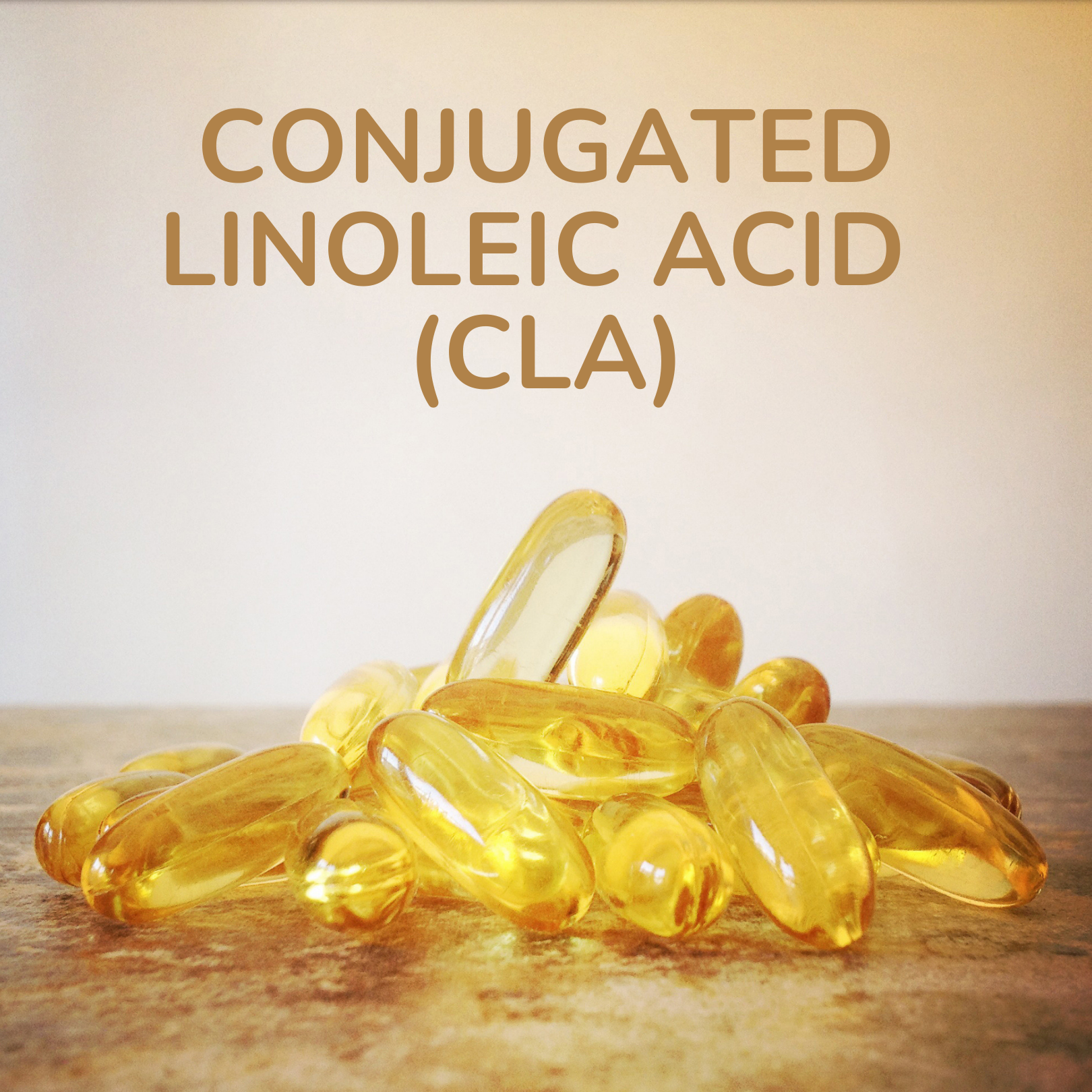 Conjugated linoleic acid, more commonly known in the supplement industry as CLA, is a mixture of polyunsaturated and trans fatty acids that have the general structure of linoleic acid. They’re conjugated with a double bond somewhere along the fatty acid. This fat is found in meat, milk, cheese, butter and white mushrooms. CLA has been investigated as a fat burner because of its effect on a molecular signalling receptor family named PPAR, which is related to fat burning, steroid signalling, inflammation and glucose/lipid metabolism.4
Conjugated linoleic acid, more commonly known in the supplement industry as CLA, is a mixture of polyunsaturated and trans fatty acids that have the general structure of linoleic acid. They’re conjugated with a double bond somewhere along the fatty acid. This fat is found in meat, milk, cheese, butter and white mushrooms. CLA has been investigated as a fat burner because of its effect on a molecular signalling receptor family named PPAR, which is related to fat burning, steroid signalling, inflammation and glucose/lipid metabolism.4
How It Works
The main fat-burning mechanism of CLA is thought to be through its ability to bind and inhibit PPARa, which is highly expressed in the liver. Research suggests that CLA increases energy expenditure, via increasing carnitine palmitoyltransferase-1 (CMPT-1) and acyl-CoA oxidase in the liver.5
CLA may also decrease triglyceride (stored fat) incorporation into fat cells and inhibits acetyl CoA carboxylase, lipoprotein lipase (LPL) and fatty acid synthase (FAS), which are the enzymes responsible for fat synthesis.6
However, although certain isomers of CLA can inhibit PPARa, others activate, showing a variation in genetic response to CLA supplementation in humans. Study results are mixed, variously showing a decrease in activity in certain enzymes, an increase in activity or no significant effect.
Lack of Consistent Results
Human studies on the effectiveness of CLA are lacking. Multiple studies have shown mixed results; while some have lost weight and or fat, others have gained or experienced no effect. For example, in one two-year study, obese, healthy individuals given 3.4 grams of CLA daily reduced fat mass by 1.7 +/- 2.4 kilograms.7
In a double-blind, placebo-controlled trial on the fat-loss effects of CLA on exercising women with obesity receiving either 3.2 grams of CLA or 4 grams of olive oil per day, following an 8-week aerobic exercise program, the CLA group didn’t show statistically different changes from the placebo group.8
Rating: 
Garcinia Cambogia (Hydroxycitric Acid)
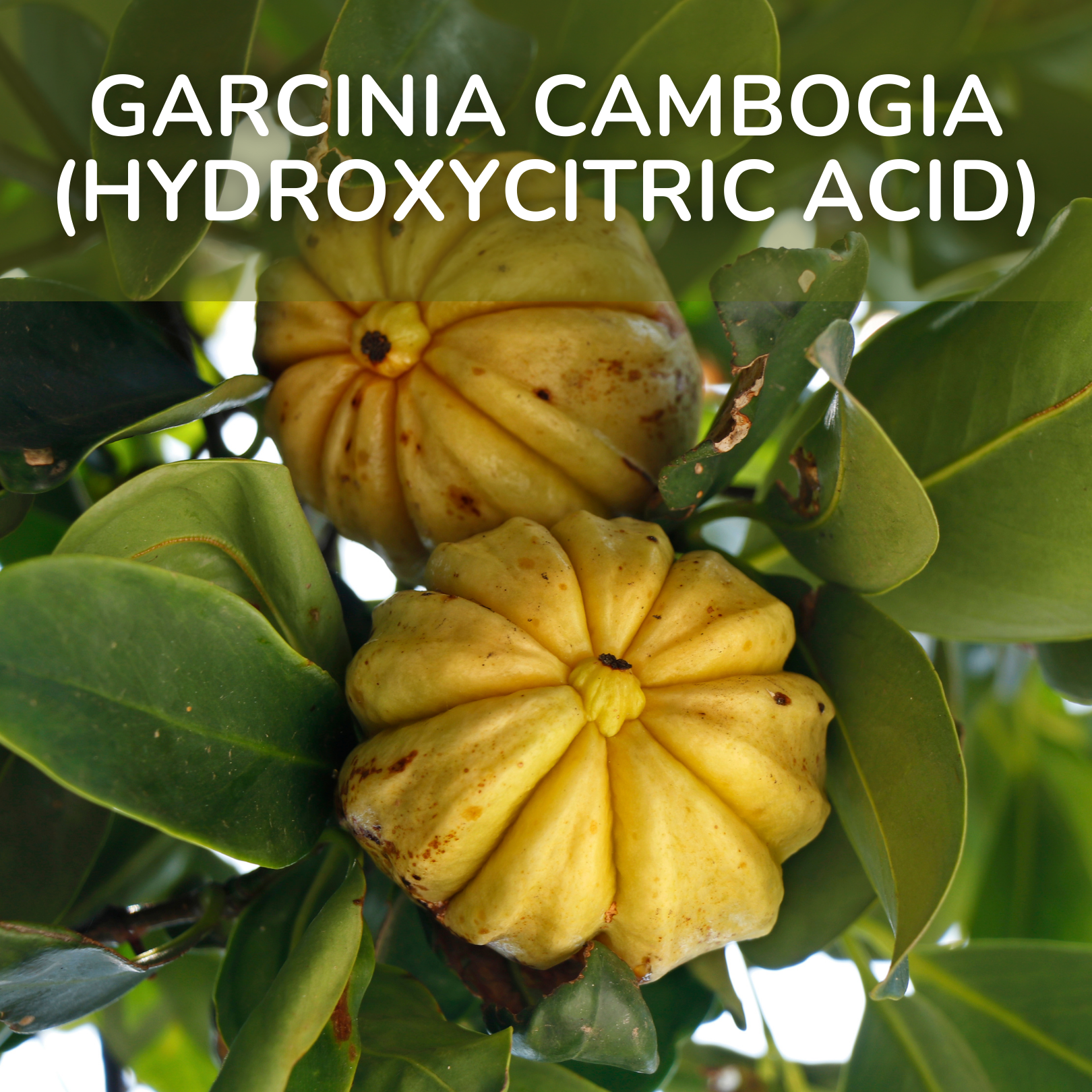 This small tropical sweet fruit, native to Southeast Asia, delivers the active phytochemical hydroxycitric acid (HCA), derived from the fruit rind.9 It has traditional uses in food as a sour flavour because of its high concentration of HCA, which is structurally similar to citric acid. It was also used to enhance satiety, which popularized its use in many weight-loss and fat-burning products of the past. We’ve also seen it recently combined with more cutting-edge thermogenic support ingredients such as CaloriBurn GP by NNB Nutrition. ALLMAX Nutrition’s Rapidcuts Thermo is one such example of this.
This small tropical sweet fruit, native to Southeast Asia, delivers the active phytochemical hydroxycitric acid (HCA), derived from the fruit rind.9 It has traditional uses in food as a sour flavour because of its high concentration of HCA, which is structurally similar to citric acid. It was also used to enhance satiety, which popularized its use in many weight-loss and fat-burning products of the past. We’ve also seen it recently combined with more cutting-edge thermogenic support ingredients such as CaloriBurn GP by NNB Nutrition. ALLMAX Nutrition’s Rapidcuts Thermo is one such example of this.
How It Works
The weight-loss mechanism of action is twofold. HCA can inhibit an enzyme called ATP citrate lyase, which is required in lipogenesis, the synthesis of fatty acids.9 This inhibition results in the suppressed formation of acetyl-CoA from citrate and less substrate for fatty acid synthesis—basically, less fat accumulation and storage when excess calories are consumed.9 HCA has also shown potential to increase serotonin levels in the brain, via inhibiting serotonin reuptake.10 Increasing serotonin levels can decrease food intake and enhance mood during dieting.
Research Results
Although early research on HCA was positive, showing reduction in body weight and fat loss, further research using randomized, placebo-controlled trials hasn’t reported the same outcomes. Most studies were conducted in small samples, using short-term interventions.
A double-blind, placebo-controlled parallel study group assessed the effects of Garcinia cambogia on appetite.11 Each group received a reduced calorie diet for 12 weeks. Half the group received 400 milligrams of Garcinia cambogia 30 to 60 minutes prior to meals, totaling 2.4 grams per day, and the other half received placebos. Both groups lost body weight, but the HCA group lost more. No effects of the HCA were observed on appetite, nor better dietary compliance or energy intake, indicating HCA didn’t appear to have a positive effect on satiety.11
In another 12-week study, Garcinia cambogia taken before three main meals of a low-calorie diet given to overweight but otherwise healthy adults failed to show any significant differences in weight loss or body fat relative to placebo.12
Rating: 
Green Coffee Bean Extract
 This is derived from unroasted, raw coffee beans. Unroasted coffee beans contain the active phytocompound chlorogenic acids (CGA). Roasting coffee beans reduces the amount of chlorogenic acids. This active is readily absorbed and has been associated with weight loss via regulation of hormone secretion, glucose absorption and fat metabolism. Chlorogenic acids may also work as antioxidants.
This is derived from unroasted, raw coffee beans. Unroasted coffee beans contain the active phytocompound chlorogenic acids (CGA). Roasting coffee beans reduces the amount of chlorogenic acids. This active is readily absorbed and has been associated with weight loss via regulation of hormone secretion, glucose absorption and fat metabolism. Chlorogenic acids may also work as antioxidants.
How It Works
Chlorogenic acids can modulate fat metabolism by reducing the amount of triglyceride accumulation in the liver, as well as helping fat cells release free fatty acids to be burned off.13 Chlorogenic acids have also been shown to modulate glucose metabolism and decrease absorption and utilization of glucose from food.13
Some Positive Results—Retracted
A meta-analysis on the effects of green coffee extract for weight loss noted moderate but inconsistent weight loss. In one 12-week trial, obese individuals given 11 grams of green coffee containing 440 to 495 milligrams of chlorogenic acids daily lost 5.4 +/- 0.6 kilograms, with a control coffee group reaching a significantly lesser loss of 1.7+/- 0.9 kilograms. Fat mass was reduced by 3.6 percent, which comprised 80 percent of total weight loss.14 In a study using a smaller dose of 0.48 grams of green coffee extract, providing only 140 milligrams of CGA, no weight loss occurred.15 In another study of overweight adults given 700 milligrams (two doses of 350 milligrams) of green coffee extract at 45.9 percent chlorogenic acids, all subjects underwent periods of 350 milligrams, 700 milligrams, or placebo for 8 weeks each in randomization and noted weight loss over time. However, this study was later retracted.16
Rating: 
Green Tea
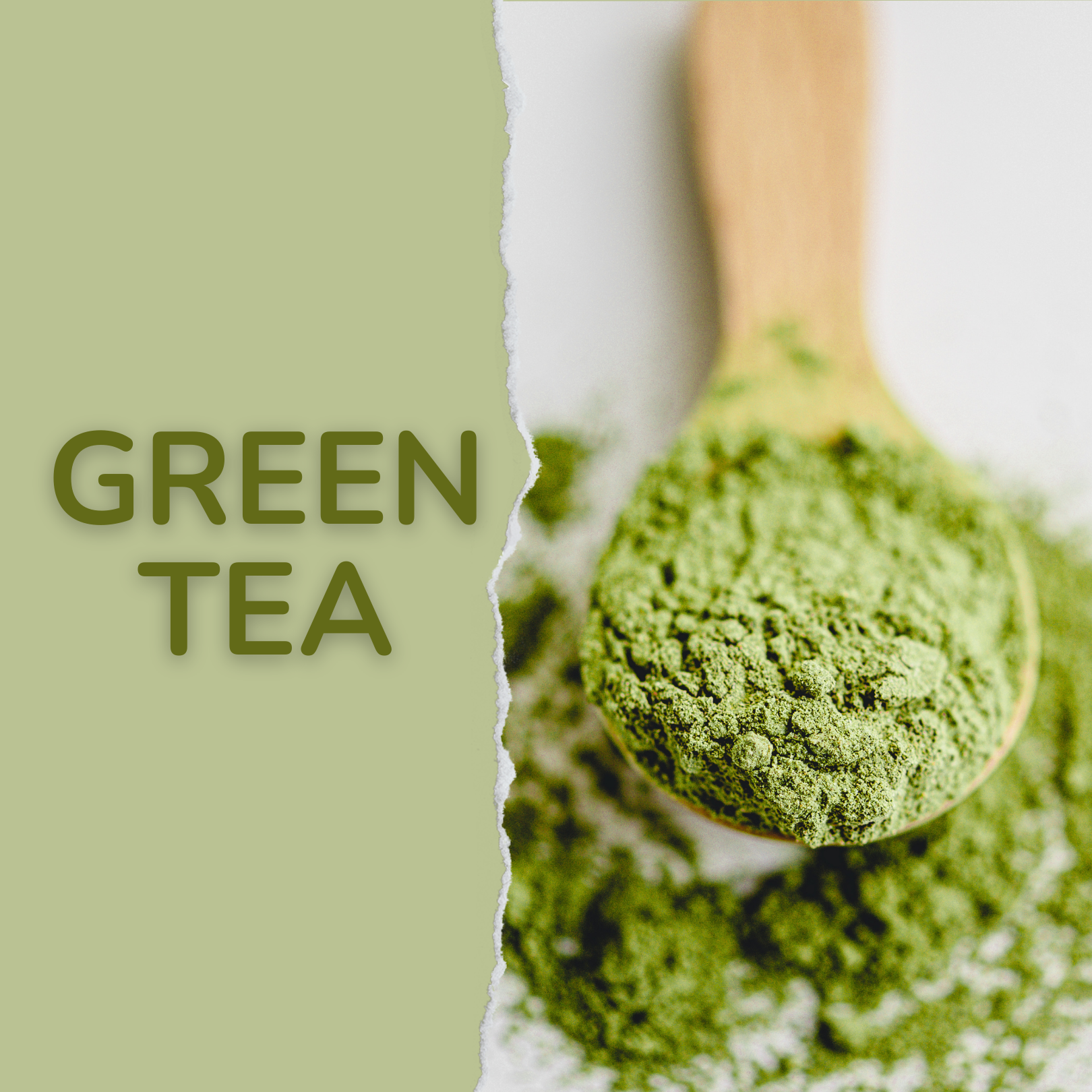 Green tea has many health benefits and has been widely used in Chinese medicine for its antioxidant properties to treat and prevent disease. The active ingredient in green tea is its polyphenols, more specifically the catechins, one of which, epigallocatechin gallate (EGCG), has positive fat-burning benefits.
Green tea has many health benefits and has been widely used in Chinese medicine for its antioxidant properties to treat and prevent disease. The active ingredient in green tea is its polyphenols, more specifically the catechins, one of which, epigallocatechin gallate (EGCG), has positive fat-burning benefits.
How It Works
EGCG has been shown to have a thermogenic effect in the body via two mechanisms. It can increase the amount of fat used as energy during exercise and post-exercise, and by inhibiting the reuptake of norepinephrine (NE) by blocking the catechol-O-methyltranferase (COMT) enzyme that can degrade NE.17 NE is a key compound involved in fat burning, metabolic regulation and appetite control. Green tea has been shown to significantly increase resting metabolic rate, or 24-hour energy expenditure.18
Combined with caffeine, green tea has a synergistic effect. Caffeine blocks another enzyme involved in degradation of NE called cAMP. Blocking this enzyme allows the fat-burning mechanism to remain active for longer. This helps increase the rate of fat release to be used as fuel, allowing you to burn off more fat.
Mixed Results
Although there’s a lot of research to support the effectiveness of green tea, when it comes to its use as a dietary supplement, results are mixed. Some studies show no differences between control and experimental groups when it comes to fat oxidation, whereas others show significant results.19,20 These inconsistencies may be because of individual differences, such as caffeine tolerance and/or percentage of active EGCG. To add to the confusion, many users of green tea complain of not seeing any noticeable changes in their body composition after using it. Unfortunately, it’s also been linked to liver toxicity in some people, which has contributed to its fall in popularity.
Rating: 
Apple Cider Vinegar
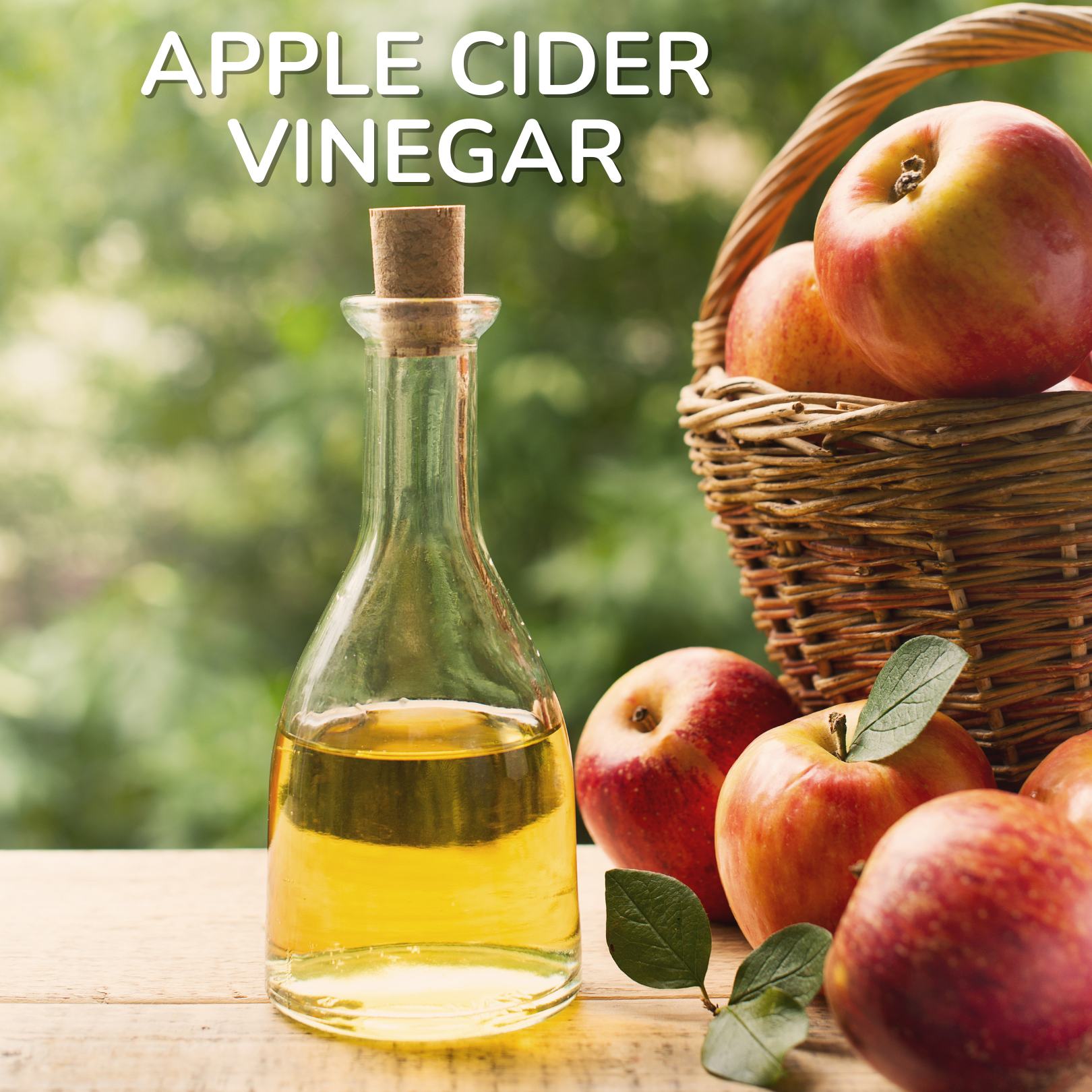 Apple cider vinegar is a vinegar made from apple juice. It contains phytochemicals from apples, along with a high content of acetic acid. It has uses in traditional medicine for its antibacterial and antioxidant properties.
Apple cider vinegar is a vinegar made from apple juice. It contains phytochemicals from apples, along with a high content of acetic acid. It has uses in traditional medicine for its antibacterial and antioxidant properties.
How It Works
One study in mice showed that acetic acid inhibited the accumulation of body fat and liver lipids.21 Significant increases were observed in the expressions of genes for PPARa and for fatty acid oxidation and thermogenesis-related proteins—acetyl-CoA oxidase (ACO), carnitine palmitoyl transferase-1 (CPT-1) and uncoupling protein-2 (UCP-2)—in the livers of the acetic acid-treatment groups.21
PPARa, ACO, CPT-1 and UCP-2 gene expressions were increased in vitro by acetate addition to liver cells. However, the effects weren’t observed in cells depleted of AMP-activated protein kinase (AMPK). In conclusion, acetic acid suppresses accumulation of body fat and liver lipids by upregulation of genes for PPARa and fatty acid oxidation related proteins by AMPK mediation in the liver.21
Appetite Reduction
In a randomized, double-blind, placebo-controlled trial, 175 overweight participants received a 500-millilitre beverage containing 0, 15 or 30 millilitres of apple cider vinegar daily for 12 weeks. All subjects were allowed to make their own food choices.22
At the end of the study, the placebo group didn’t lose any weight or body fat, but the apple cider vinegar groups had seen a statistically significant reduction in weight and body fat area, body fat ratio and waist and hip circumference as compared with the placebo group.22 It was estimated that the apple cider vinegar groups reduced their total energy intake more than the placebo group, but there weren’t statistically significant differences.23
In another randomized, unblinded controlled trial, overweight participants were assigned to follow either a low-calorie diet or the same low-calorie diet with 30 millilitres of apple cider vinegar daily for 12 weeks, given in 15-millilitre servings at lunch and dinner.23 There was a higher reduction in calories in apple cider vinegar group, but not a statistically significant one.23 The apple cider vinegar group had a greater reduction in body weight, BMI, hip circumference, visceral adiposity index and appetite score.
Rating: 
Caffeine
 Caffeine is the main energizing ingredient from coffee beans, but it can also be found in other plants such as guarana and tea. The caffeine found in fat-burning and weight-loss products is usually in the synthetic form. Caffeine is a powerful stimulant that not only increases energy, focus and endurance but also has an appetite-suppressing effect.
Caffeine is the main energizing ingredient from coffee beans, but it can also be found in other plants such as guarana and tea. The caffeine found in fat-burning and weight-loss products is usually in the synthetic form. Caffeine is a powerful stimulant that not only increases energy, focus and endurance but also has an appetite-suppressing effect.
How It Works
Caffeine works by blocking phosphodiesterase (PDE), the key enzyme responsible for the breakdown of cyclic adenosine monophosphate (cAMP).24 Blocking the breakdown of cAMP allows cAMP-dependent pathways to stay active for longer. This includes regulation of blood sugars, glycogen and fat metabolism. Caffeine increases the release and mobilization of fat cells for use as fuel during exercise or while at rest. Increased cAMP activity also results in greater release and availability of NE.
One study showed that caffeine consumption at a dose of 100 milligrams resulted in a significant thermogenic effect even though subjects had a habitual caffeine intake of 100 to 200 milligrams per day. The increase in energy expenditure after caffeine ingestion had not returned to baseline three hours after consumption.25
Synergistic Effect
Caffeine has a synergistic effect when combined with other fat-burning supplements such as green tea or synephrine, allowing NE to remain elevated for longer periods. Caffeine’s energizing and focusing effects are beneficial to anyone on a diet and training regularly, but for maximum fat-burning effectiveness, it’s best combined with other thermogenic ingredients, where it can allow for prolonged fat burning!
Rating: 
Nigella sativa
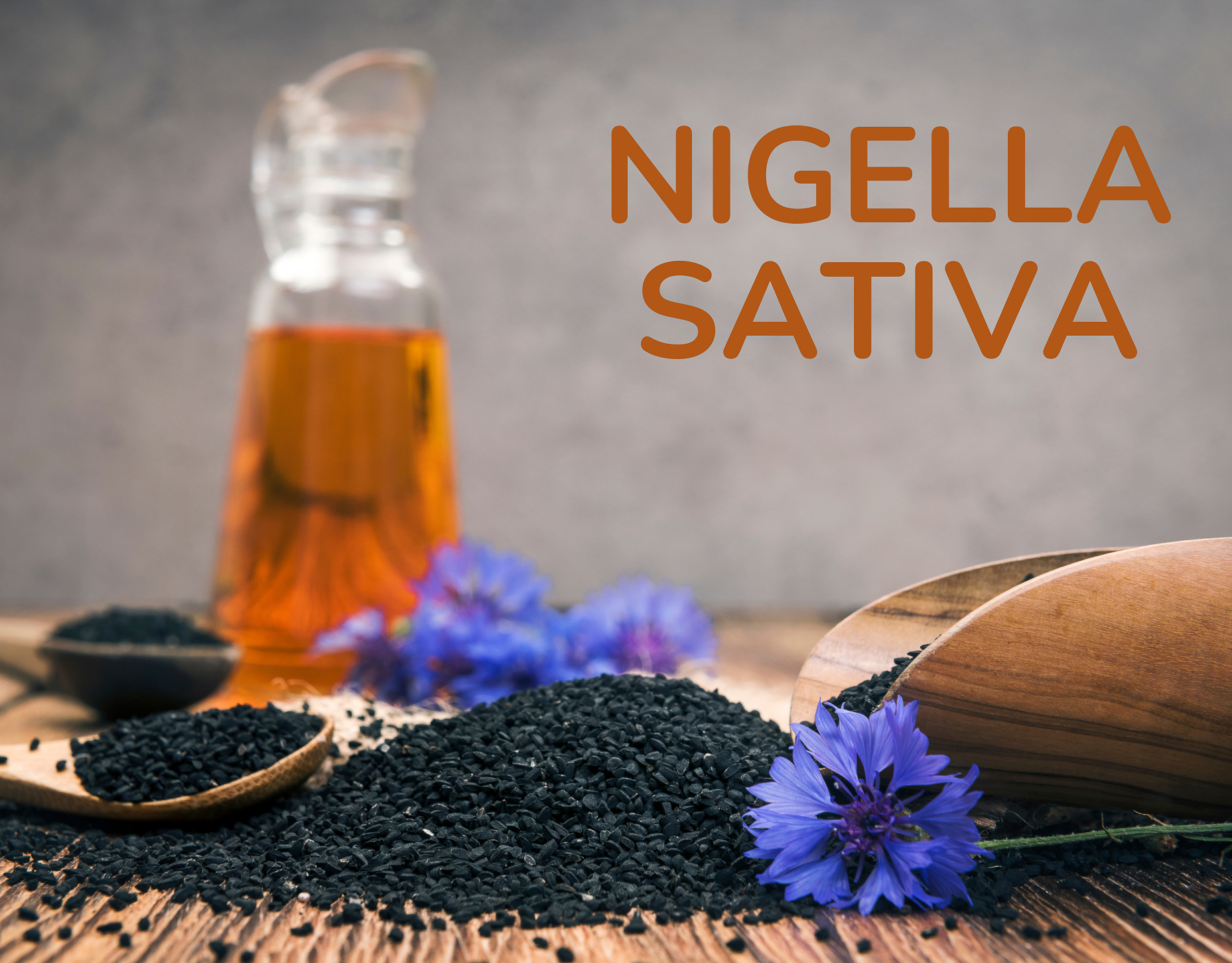 Nigella sativa is a plant referred to as black cumin or black caraway seed. The seeds and oil are main medicinal component. Nigella has medicinal activity in low doses and doesn’t require extraction. The seeds contain a variety of minerals, vitamins, polyphenols, sterols, lipase enzymes and flavonoids.
Nigella sativa is a plant referred to as black cumin or black caraway seed. The seeds and oil are main medicinal component. Nigella has medicinal activity in low doses and doesn’t require extraction. The seeds contain a variety of minerals, vitamins, polyphenols, sterols, lipase enzymes and flavonoids.
How It Works
Nigella appears to activate PPARa and AMPK, increasing insulin activity and glucose metabolism.26 It also appears to increase glucose uptake into muscle cells. However, its mechanism isn’t clear, and it’s more than likely that multiple bioactive compounds are involved in its anti-obesity effects. Some research suggests that nigella can improve insulin sensitivity and metabolic status, which can lead to an improvement in metabolic profile and a considerable decrease in body weight.
Anti-Obesity Effects
Results are mixed when it comes to nigella’s effectiveness. One study reported that a daily intervention of 2 grams of nigella powder for 12 weeks lowered body weight in healthy, obese participants compared with a placebo.27 However, another study found that nigella using the same daily dose didn’t improve BMI significantly.28
In one double-blind, randomized, placebo-controlled study, the daily consumption of 2 grams of nigella for two 8-week periods was found to have considerable improvements in body composition measurements including a reduction in BMI, body weight and waist circumference, and a significant decrease in body fat mass, fat percent and visceral fat area as well as a significant decrease in appetite.29
Rating: 
Grains of Paradise CalorieBurn GP
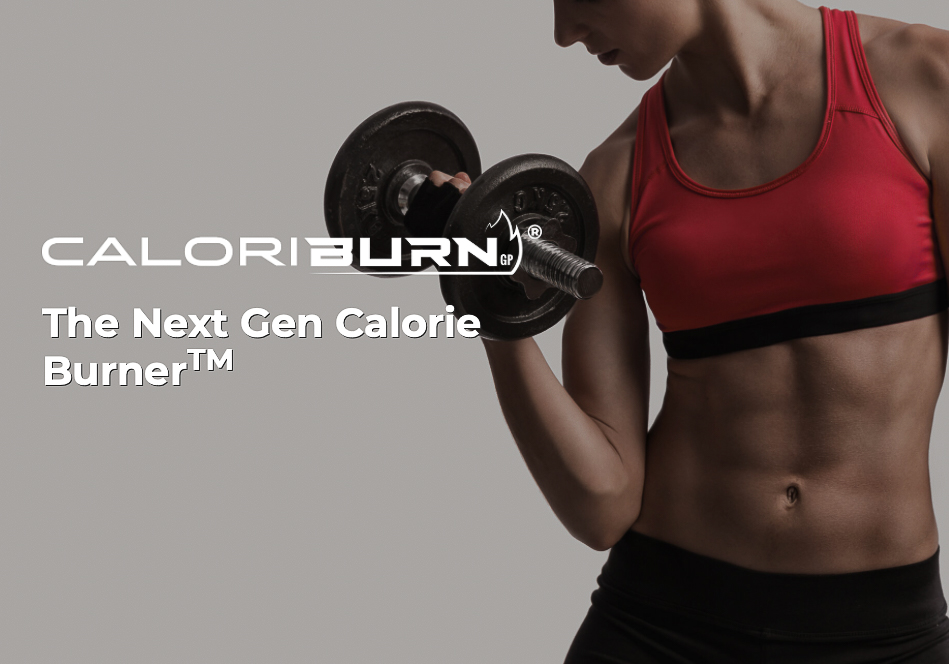 Grains of paradise is an ancient spice also known as Aframomum melegueta with a similar composition to ginger, including its active compounds. Grains of paradise has traditional uses in West African medicine. It’s also commonly used as a replacement for pepper when flavouring foods. Grains of paradise’s bioactive compounds includes the compounds 6-paradol, 6-shogaol, 6-gingerol and 6-gingerdione. These have been shown to effectively trigger BAT activation when taken in a precise ratio to one another.
Grains of paradise is an ancient spice also known as Aframomum melegueta with a similar composition to ginger, including its active compounds. Grains of paradise has traditional uses in West African medicine. It’s also commonly used as a replacement for pepper when flavouring foods. Grains of paradise’s bioactive compounds includes the compounds 6-paradol, 6-shogaol, 6-gingerol and 6-gingerdione. These have been shown to effectively trigger BAT activation when taken in a precise ratio to one another.
Grains of paradise extract has been shown to upregulate brown adipose tissue (BAT) activity, which significantly increases energy expenditure, regulates metabolism and optimizes body composition.
In a single-blind, placebo-controlled study in 19 healthy young men, supplementing with 40 milligrams of grains of paradise resulted in a 400 percent increase in metabolic rate within 30 minutes. Additionally, participants taking grains of paradise experienced a 6 percent increase in energy expenditure compared to a control group.30
A second human single-blind placebo-controlled study measured the effects of supplementing with grains of paradiseextract daily for 4 weeks on energy expenditure and body composition in 19 healthy overweight females.31 Participants taking grains of paradise experienced a 7 percent increase in metabolic rate and burned approximately 100 more calories daily versus the placebo group. They also lost roughly 250 percent more visceral fat than those taking the placebo.31
Superior Quality
CaloriBurn GP by NNB Nutrition is a 100 percent natural grains of paradise extract, which is derived using a proprietary extraction technology that can preserve all the metabolism-enhancing bioactive compounds.
The unique bioactive profile of CaloriBurn GP includes the compounds 6-paradol, 6-shogaol, 6-gingerol and 6-gingerdione in the exact ratios shown to effectively trigger BAT activation. On its own, we give this a solid four-star rating, but when it’s stacked with ingredients that increase BAT formation itself, or stimulants such as caffeine or even substances that increase metabolic rate, we move this close to a five-star rating.
Rating: 
ZinjaBurn Zingerone
 A metabolite of zingerone, this is a thermogenic compound found in ginger. It’s chemically related to curcumin and the curcuminoids. But for our purposes as a fat-loss weapon, this ingredient enhances metabolism, supports blood sugar management, reduces inflammation and is even a powerful antioxidant! The active ingredient is dehydrozingerone (DHZ). This form is pure and engineered to be more bioavailable than generic versions of curcumin or ginger, with potentially more benefits.
A metabolite of zingerone, this is a thermogenic compound found in ginger. It’s chemically related to curcumin and the curcuminoids. But for our purposes as a fat-loss weapon, this ingredient enhances metabolism, supports blood sugar management, reduces inflammation and is even a powerful antioxidant! The active ingredient is dehydrozingerone (DHZ). This form is pure and engineered to be more bioavailable than generic versions of curcumin or ginger, with potentially more benefits.
DHZ has been shown to help regulate metabolic processes to support weight management via PPARa and also via activation of AMPK. As a result, this leads to an increase in phosphorylation of AMPK in skeletal muscle, which helps mitigate increases in fat gain and blood sugar levels.
One study in mice showed the mechanism of dehydrozingerone. Administrating this suppressed fat gain in mice fed a high-fat diet. Beneficial effects were mediated by AMPK activation as seen in various tissues such as skeletal muscle and adipocytes. Treatment with dehydrozingerone led to a 15 percent reduction in body weight and a 30 percent decrease in liver fat.32 It also led to reduction in body weight. The study also showed a reduction in blood glucose, insulin and leptin levels.32
High Bioavailability
ZinjaBurn is a highly bioavailable dehydrozingerone and more metabolically active, unlike ginger or curcumin. In addition to its benefits on blood sugar and metabolism, it may also improve mood. Dehydrozingerone synergizes with many commonly used thermogenic weight-loss ingredients, including some of the ingredients already mentioned here such as MitoBurn, L-BAIBA, CaloriBurn GP, grains of paradise and GlucoVantage, DHB. This ingredient has GRAS status and is HPLC tested for purity.
Rating: 
MitoBurn L-BAIBA
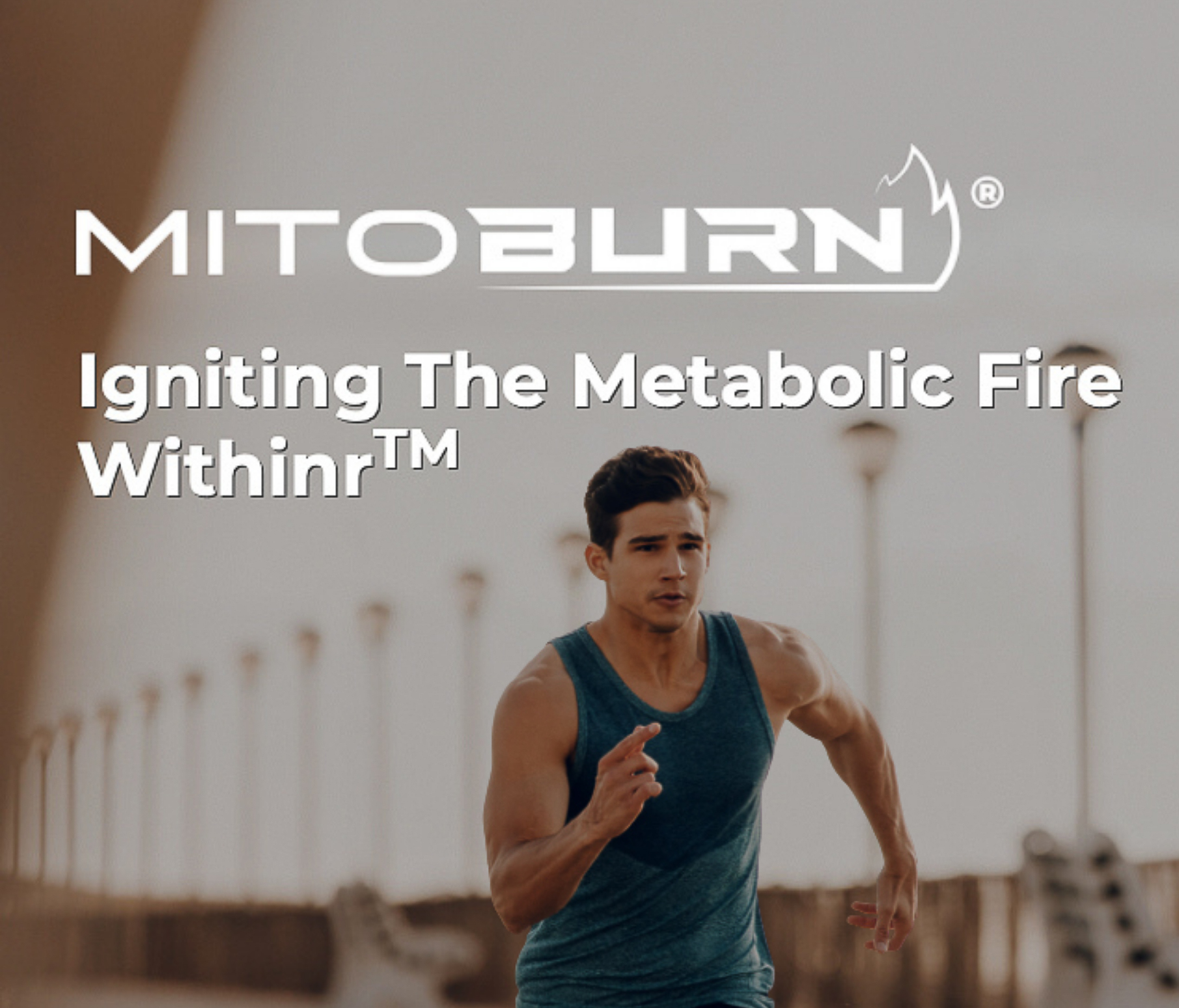 BAIBA, also known as b-aminoisobutyric acid, has been identified in humans as well as in nature. BAIBA is a promising novel myokine compound that has been shown to increase energy expenditure, reduce body weight, improve body composition and improve insulin resistance.
BAIBA, also known as b-aminoisobutyric acid, has been identified in humans as well as in nature. BAIBA is a promising novel myokine compound that has been shown to increase energy expenditure, reduce body weight, improve body composition and improve insulin resistance.
L-BAIBA is an exercise mimetic, helping you burn more calories and perform at a higher level with more energy all day long. It plays the role behind the benefits of exercise such as increased glucose uptake, increased free fatty acid oxidation and reduced fat mass. BAIBA has been shown to stimulate brown adipose tissue (BAT) activation, increasing fat oxidation. It’s also been shown to increase b-oxidation gene expression in liver cells in vitro and in vivo.33 BAIBA increases hepatic fatty acid oxidation gene expression through a PPARa-dependent mechanism. BAIBA treatment significantly and dose-dependently increases the maximal oxygen consumption rate of liver cells. This shows that BAIBA induces transcriptional change in hepatocytes, leading to a more oxidative phenotype.
 Safety & Efficacy
Safety & Efficacy
On May 13, 2022, a toxicity study Published by NNB was designed to evaluate the safety and toxic potentials of MitoBurn(L-BAIBA), where L-BAIBA was administered orally to Sprague Dawley rats at 100, 300, and 900 mg/kg/day for 90 days. The study shows that no treatment-related adverse effects were observed in any of the treatment groups. Based on the results, the No-Observed-Adverse-Effect Level (NOAEL) of L-BAIBA was 900 mg/kg/day. This study is the first study to access the safety profile of L-BAIBA in an in vivo repeated dose subchronic toxicity stud by oral (gavage) route in Sprague Dawley rats.
BAIBA seems to hold promise for reducing body fat gain, increasing b-oxidation or fat burning, lowering bad cholesterol levels, improving insulin sensitivity and glucose tolerance, increasing ketone production, reducing the inflammatory response brought on by weight gain and having effects on satiating factors such as leptin.
NNB Nutrition’s branded version of L-BAIBA (known as MitoBurn) provides L-BAIBA in its most biologically active form (versus the less active D-BAIBA version). This delivers a greater potency. Increased levels of L-BAIBA have also been associated with other exercise benefits. MitoBurn L-BAIBA is stable in aqueous solutions and good for encapsulation, so formulators can include this in capsule products. It can be used in pre-workout formulas, weight loss/thermogenic products and ketone/BHB formulas.
Rating: 
GlucoVantage Dihydroberberine
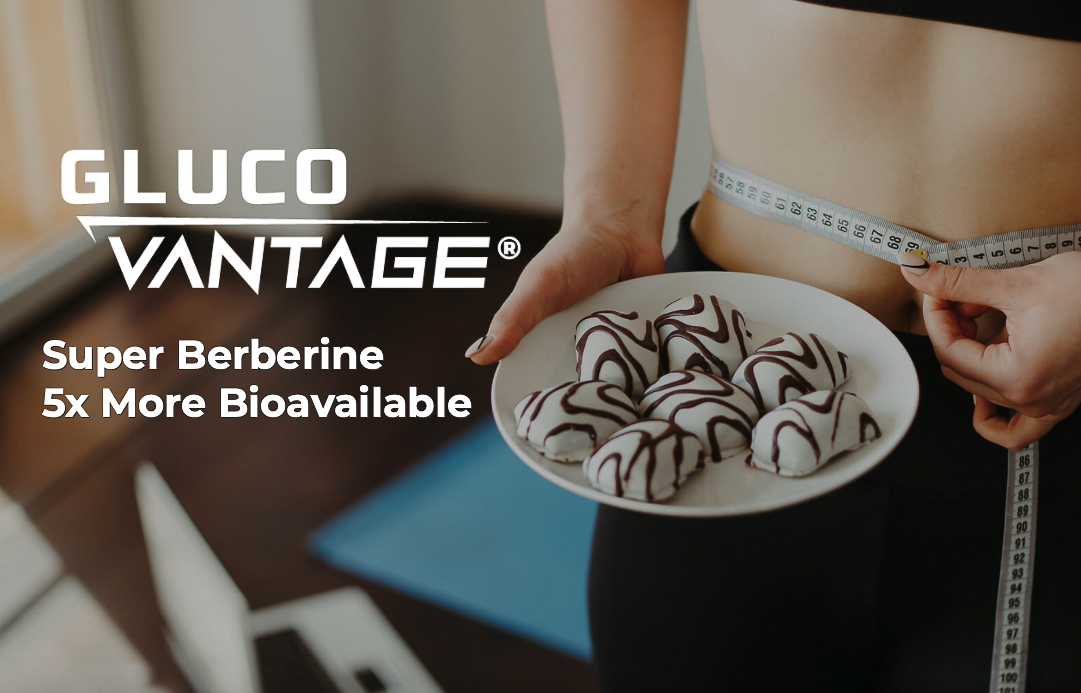 Berberine has been used for thousands of years, with origins in Chinese and Ayurvedic medicine. Berberine is a bioactive plant supplement and is best known for its abilities to improve blood glucose disposal, improve insulin efficiency, lipid metabolism and even body composition. A more effective form of berberine is dihydroberberine (DHB), which is an active derivative metabolite.
Berberine has been used for thousands of years, with origins in Chinese and Ayurvedic medicine. Berberine is a bioactive plant supplement and is best known for its abilities to improve blood glucose disposal, improve insulin efficiency, lipid metabolism and even body composition. A more effective form of berberine is dihydroberberine (DHB), which is an active derivative metabolite.
Berberine works by activating the pathways of AMPK, which can help increase blood glucose breakdown and utilization, insulin sensitivity, fat oxidation and inhibit fat cell growth, which can in turn help reverse certain metabolic diseases. Dihydroberberine may work by blocking lipid metabolism via pancreatic lipase, therefore decreasing hydrolysis and absorption of dietary fats.34 Research shows dihydroberberine improves insulin sensitivity, supports healthy blood glucose and insulin levels, reduces advanced glycation end products (AGEs) and improves nutrient partitioning as well as inhibiting fat cell growth. Dihydroberberine is powerful for body composition, keto diets and anti-aging support.
Potency and Purity of GlucoVantage Dihydroberberine
NNB Nutrition’s GlucoVantage provides pure dihydroberberine, which has anti-inflammatory and fat metabolism benefits and has been shown to be more effective, with five times more bioavailability and twice the lasting rate compared to berberine, with a requirement for smaller doses.
NNB Nutrition extracts dihydroberberine from natural non-GMO Berberis aristate, via an enzymatic process that converts to 97 percent dihydroberberine using a process that replicates the process in the human gut.
GlucoVantage dihydroberberine is lab-tested for purity and requires a small dose of 100 to 200 milligrams taken up to three times daily prior to meals to elicit its blood glucose-lowering effects. DHB is a perfect addition to non-stimulant weight-loss and fat-burning products.
Rating: 
Branded vs. Non-Branded Ingredients
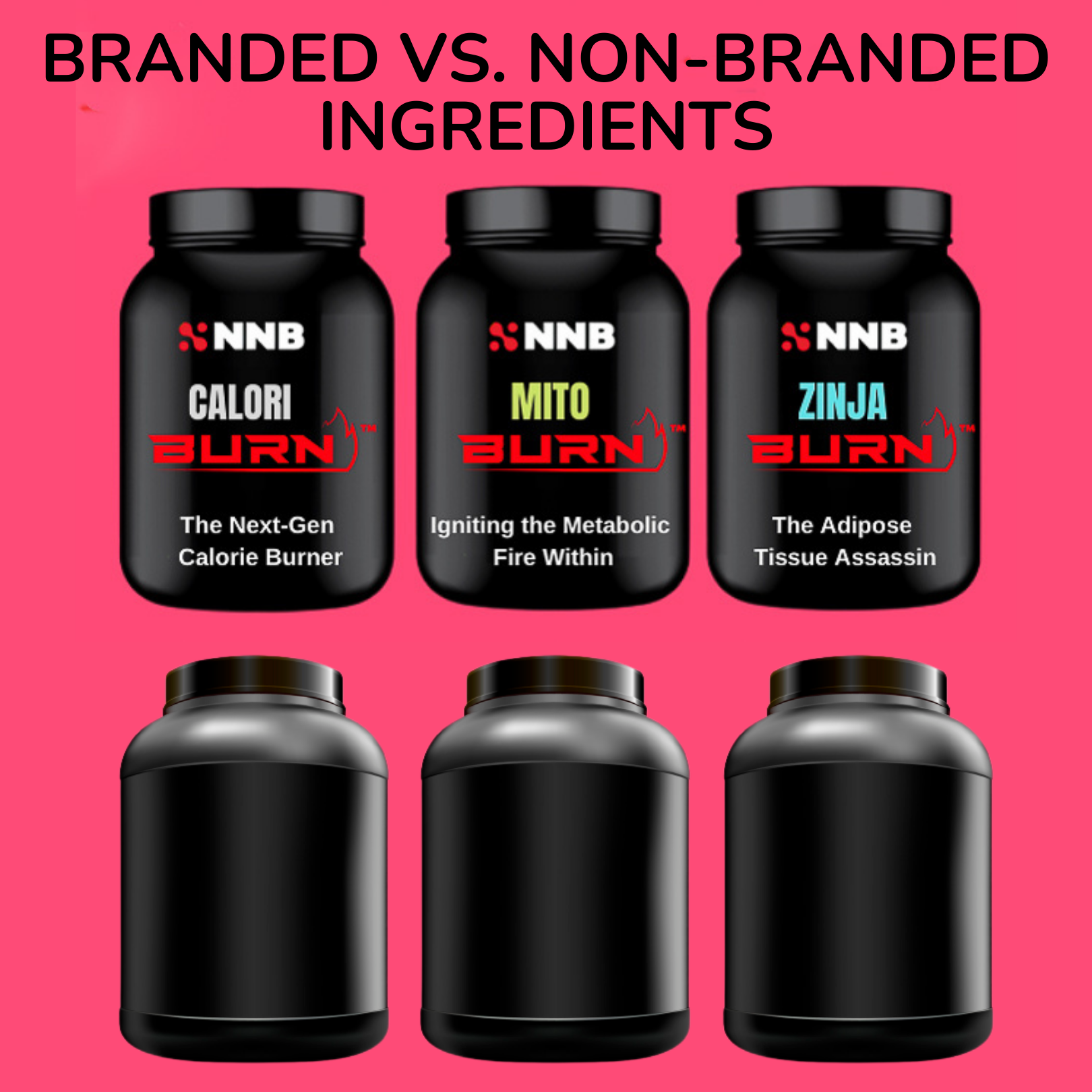
There you have it, a review of some of the most popular fat-burning ingredients on the market today. If there’s one thing that’s consistent among most of these ingredients when it comes to effectiveness, it’s the purity and potency found with branded ingredients. Generic ingredients don’t ensure potency, particularly when it comes to the active ingredient and the percentage of that active ingredient needed to elicit the metabolic response. When sourcing fat-burning ingredients, always consider using ingredients that are tested for purity, have GRAS status, are sourced from natural sources and use the most effective bioactive compound. Don’t waste money on impurities or filler ingredients.
 If you want more information on the most effective ingredients for fat burning and weight loss, visit NNB Nutrition.
If you want more information on the most effective ingredients for fat burning and weight loss, visit NNB Nutrition.
References
- Kraemer WJ, WJ, Volek JS, Dunn-Lewis C. L-carnitine supplementation: influence upon physiological function. Curr Sports Med Rep. 2008 Jul-Aug;7(4):218-23. doi: 10.1249/JSR.0b013e318180735c.
- Bremer J. Carnitine – metabolism and functions. Physiol Rev. 1983 Oct;63(4):1420-80. doi: 10.1152/physrev.1983.63.4.1420.
- Villani RG, Gannon J, Self M, Rich PA. L-carnitine supplementation combined with aerobic training does not promote weight loss in moderately obese women. Int J Sport Nutr Exerc Metab. 2000 Jun;10(2):199-207. doi: 10.1123/ijsnem.10.2.199.
- Brown JM, Boysen MS, Jensen SS, et al. Isomer-specific regulation of metabolism and PPAR-gamma signaling by CLA in human preadipocytes. J Lipid Res. 2003 Jul;44(7):1287-300. doi: 10.1194/jlr.M300001-JLR200.
- Macarulla MT, Fernández-Quintela A, Zabala A, et al. Effects of conjugated linoleic acid on liver composition and fatty acid oxidation are isomer dependent in hamster. Nutrition. 2005 Apr;21(4):512-9. doi: 10.1016/j.nut.2004.07.011.
- Zabala A, Churruca I, Fernández-Quintela A, et al. trans-10,cis-12 Conjugated linoleic acid inhibits lipoprotein lipase but increases the activity of lipogenic enzymes in adipose tissue from hamsters fed an atherogenic diet. Br J Nutr. 2006 Jun;95(6):1112-9. doi: 10.1079/bjn20061774.
- Gaullier JM, Halse J, Høye K, et al. Supplementation with CLA for 24-months is well tolerated by and reduces body fat mass in healthy, overweight humans. J Nutr. 2005 Apr;135(4):778-84. doi: 10.1093/jn/135.4.778.
- Ribeiro AS, Pina FL, Dodero SR, et al. Effect of CLA associated with aerobic exercise on body fat and lipid profile in obese women: a randomized, double-blind placebo-controlled trial. Int J Sport Nutr Exerc Metab. 2016 Apr;26(2):135-44. doi: 10.1123/ijsnem.2015-0236.
- Semwal RB, Semwal DK, Vermaak I, Viljoen A. A comprehensive scientific overview of Garcinia cambogia. Fitoterapia. 2015 Apr;102:134-48. doi: 10.1016/j.fitote.2015.02.012.
- Ohia SE, Opere CA, LeDay AM, et al. Safety and mechanism of appetite suppression by a novel hydroxycitric acid extract (HCA-SX). Mol Cell Biochem. 2002 Sep;238(1-2):89-103. doi: 10.1023/a:1019911205672.
- Mattes RD, Bormann L. Effects of (-)-hydroxycitric acid on appetite variables. Physiol Behav. 2000 Oct 1-15;71(1-2):87-94. doi: 10.1016/s0031-9384(00)00321-8.
- Heymsfield SB, Allison DB, Vasselli JR, et al. Garcinia cambogia (hydroxycitric acid) as a potential antiobesity agent: a randomized controlled trial. JAMA. 1998 Nov 11;280(18):1596-600. doi: 10.1001/jama.280.18.1596.
- Shimoda H, Seki E, Aitani M. Inhibitory effect of green coffee bean extract on fat accumulation and body weight gain in mice. BMC Complement Altern Med. 2006 Mar 17;6:9. doi: 10.1186/1472-6882-6-9.
- Thom E. The effect of chlorogenic acid enriched coffee on glucose absorption in healthy volunteers and its effect on body mass when used long-term in overweight and obese people. J Int Med Res. 2007 Nov-Dec;35(6):900-8. doi: 10.1177/147323000703500620.
- Watanabe T, Arai Y, Mitsui Y, et al. The blood pressure-lowering effect and safety of chlorogenic acid from green coffee bean extract in essential hypertension. Clin Exp Hypertens. 2006 Jul;28(5):439-49. doi: 10.1080/10641960600798655.
- Vinson JA, Burnham BR, Nagendran MV. Randomized, double-blind, placebo-controlled, linear dose, crossover study to evaluate the efficacy and safety of a green coffee bean extract in overweight subjects. Diabetes MetabSyndr Obes. 2012;5:21-7. doi: 10.2147/DMSO.S27665.
- Shixian Q, VanCrey B, Shi J, Kakuda Y, Jiang Y. Green tea extract thermogenesis-induced weight loss by EGCG inhibition of COMT. J Med Food. 2006 Winter;9(4):451-8. doi: 10.1089/jmf.2006.9.451.
- Dulloo AG, Duret C, Rohrer D, et al. Efficacy of a green tea extract rich in catechin polyphenols and caffeine in increasing 24-hour energy expenditure and fat oxidation in humans. Am J Clin Nutr. 1999 Dec;70(6):1040-5. doi: 10.1093/ajcn/70.6.1040.
- Rondanell M, Riva A, Petrangolini G, et al. Effect of acute and chronic dietary supplementation with green tea catechins on resting metabolic rate, energy expenditure and respiratory quotient: a systematic review. Nutrients. 2021 Feb 17;13(2):644. doi: 10.3390/nu13020644.
- Gregersen NT, Bitz C, Krog-Mikkelsen I, et al. Effect of moderate intakes of different tea catechins and caffeine on acute measures of energy metabolism under sedentary conditions. Br J Nutr. 2009 Oct;102(8):1187-94. doi: 10.1017/S0007114509371779.
- Kondo T, Kishi M, Fushimi T, Kaga T. Acetic acid upregulates the expression of genes for fatty acid oxidation enzymes in liver to suppress body fat accumulation. J Agric Food Chem. 2009 Jul 8;57(13):5982-6. doi: 10.1021/jf900470c.
- Kondo T, Kishi M, Fushimi T, Ugajin S, Kaga T. Vinegar intake reduces body weight, body fat mass and serum triglyceride levels in obese Japanese subjects. Biosci Biotechnol Biochem. 2009 Aug;73(8):1837-43. doi: 10.1271/bbb.90231.
- Khezri SS, Saidpour A, Hosseinzadeh N, Amiri Z. Beneficial effects of apple cider vinegar on weight management, Visceral Adiposity Index and lipid profile in overweight or obese subjects receiving restricted calorie diet: A randomized clinical trial. J Fun Foods. 2018;43: 95-102. doi: 10.1016/j.jff.2018.02.003.
- Choi OH, Shamim MT, Padgett WL, Daly JW. Caffeine and theophylline analogues: correlation of behavioral effects with activity as adenosine receptor antagonists and as phosphodiesterase inhibitors. Life Sci. 1988;43(5):387-98. doi: 10.1016/0024-3205(88)90517-6.
- Astrup A, Toubro S, Cannon S, et al. Caffeine: A double-blind, placebo-controlled study of its thermogenic, metabolic, and cardiovascular effects in healthy volunteers. Am J Clin Nutr. 1990 May;51(5):759-67. doi: 10.1093/ajcn/51.5.759.
- Benhaddou-Andaloussi A, Martineau LC, Vallerand D, et al. Multiple molecular targets underlie the anti-diabetic effect of Nigella sativa seed extract in skeletal muscle, adipocyte and liver cells. Diabetes Obes Metab. 2010 Feb;12(2):148-57. doi: 10.1111/j.1463-1326.2009.01131.x.
- Hussain M, Tunio AG, Akhtar L, Shaikh GS. Effects of Nigella sativa on various parameters in patients of non-alcoholic fatty liver disease. J Ayub Med Coll Abbottabad. 2017 Jul-Sep;29(3):403-407.
- Badar A, Kaatabi H, Bamosa A, et al. Effect of Nigella sativa supplementation over a one-year period on lipid levels, blood pressure and heart rate in type-2 diabetic patients receiving oral hypoglycemic agents: nonrandomized clinical trial. Ann Saudi Med. 2017 Jan-Feb;37(1):56-63. doi: 10.5144/0256-4947.2017.56.
- Safi S, Razmpoosh E, Fallahzadeh H, et al. The effect of Nigella sativa on appetite, anthropometric and body composition indices among overweight and obese women: A crossover, double-blind placebo-controlled, randomized clinical trial. Complement Ther Med. 2021 Mar;57:102653. doi: 10.1016/j.ctim.2020.102653.
- Sugita J, Yoneshiro T, Hatano T, et al. Grains of paradise (Aframomum melegueta) extract activates brown adipose tissue and increases whole-body energy expenditure in men. Br J Nutr. 2013 Aug;110(4):733-8. doi: 10.1017/S0007114512005715.
- Sugita J, Yoneshiro T, Sugishima Y, et al. Daily ingestion of grains of paradise (Aframomum melegueta) extract increases whole-body energy expenditure and decreases visceral fat in humans. J Nutr Sci Vitaminol (Tokyo). 2014;60(1):22-7. doi: 10.3177/jnsv.60.22.
- Kim SJ, Kim HM, Lee ES, et al. Dehydrozingerone exerts beneficial metabolic effects in high fat diet-induced obese mice via AMPK activation in skeletal muscle. J Cell Mol Med. 2015 Mar;19(3):620-9. doi: 10.1111/jcmm.12455.
- Roberts LD, Boström P, O'Sullivan JF, et al. b-Aminoisobutyric acid induces browning of white fat and hepatic b-oxidation and is inversely correlated with cardiometabolic risk factors. Cell Metab. 2014 Jan 7;19(1):96-108. doi: 10.1016/j.cmet.2013.12.003.
- Mohammad M, Al-masri IM, Issa A, Khdair A, Bustanji Y. Inhibition of pancreatic lipase by berberine and dihydroberberine: an investigation by docking simulation and experimental validation. Med Chem Res. 2013;22:2273-8. doi: 10.1007/s00044-012-0221-9.




